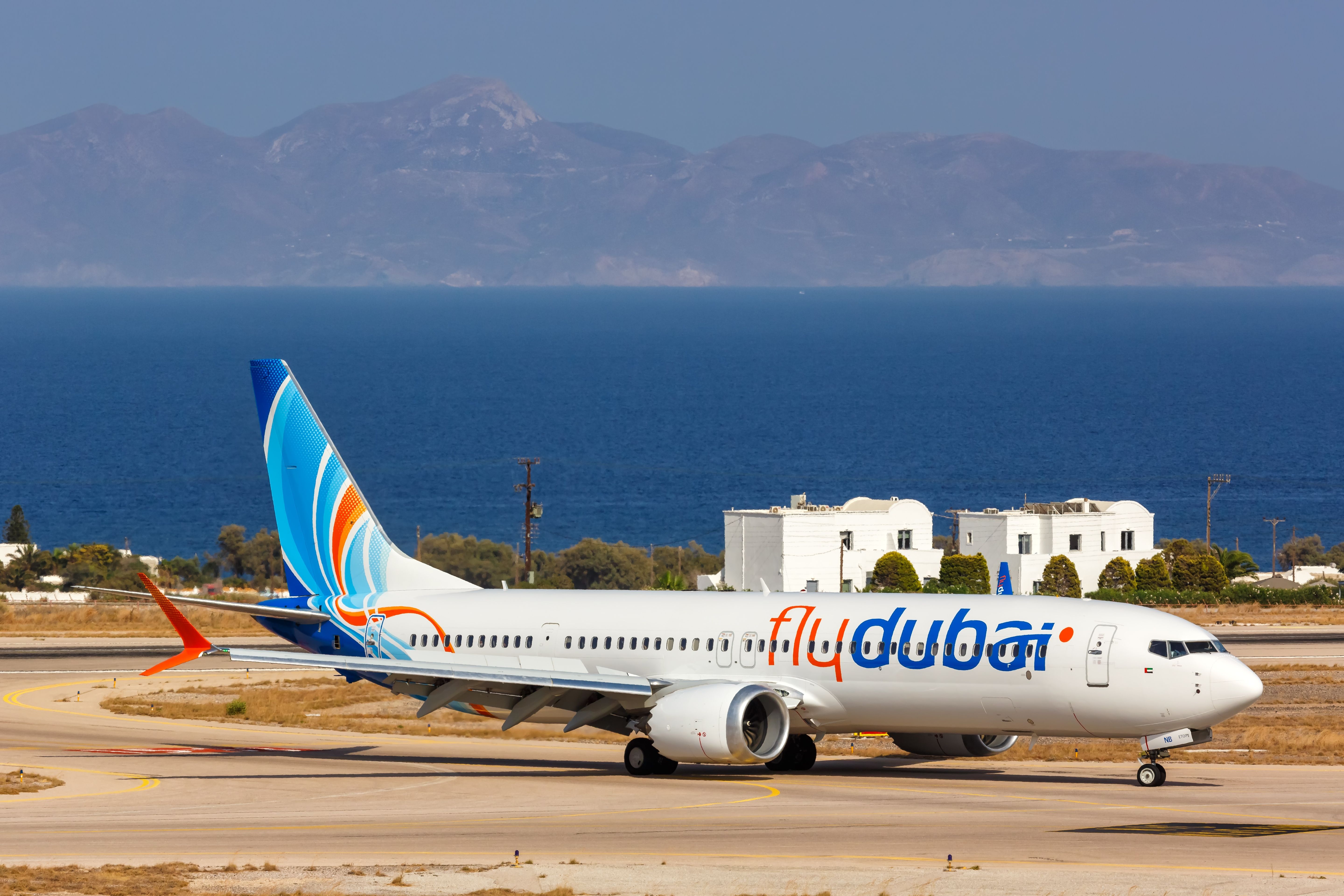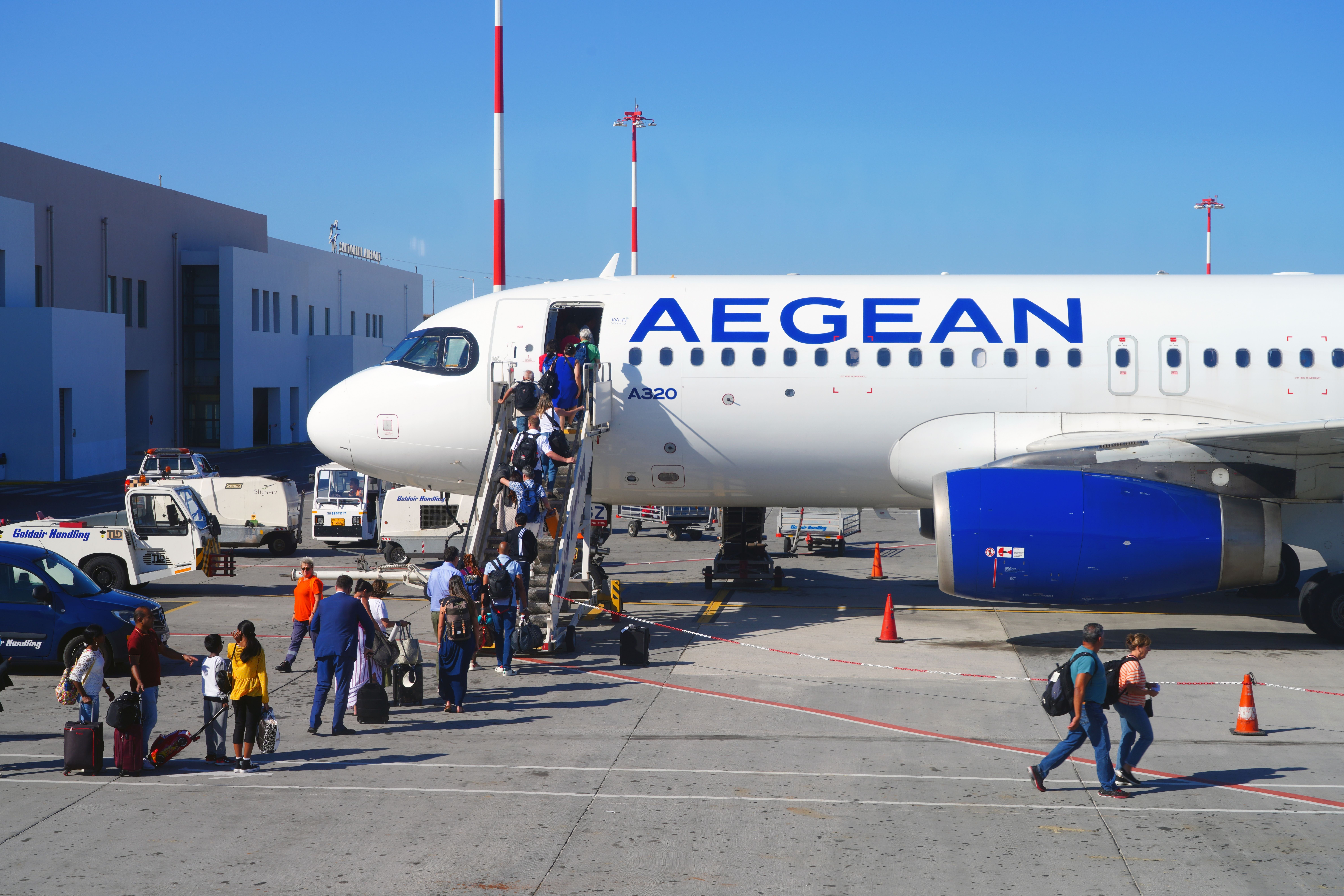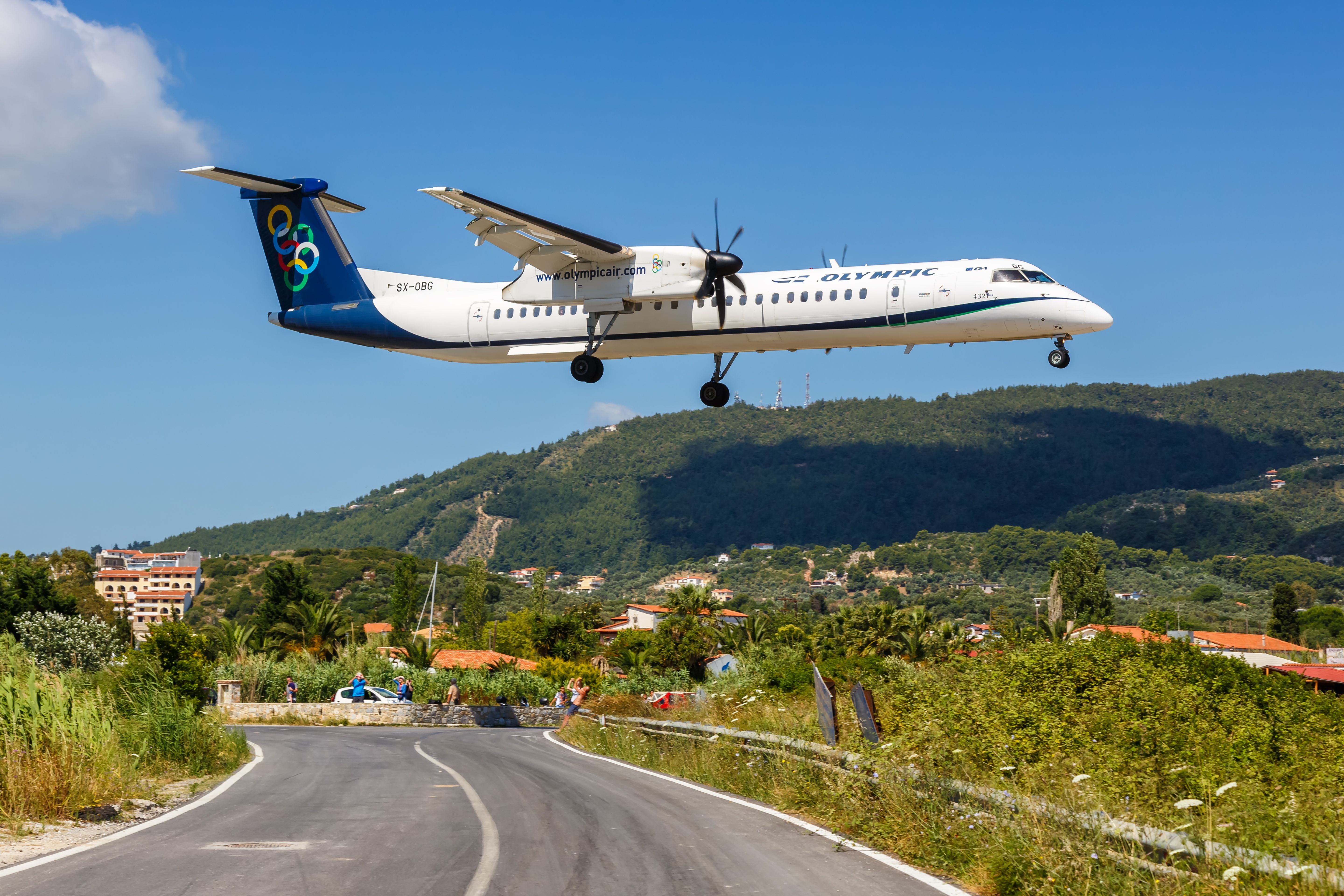One of the most popular leisure destinations on the globe, Greece sees over 30 million annual tourists from around the world. While there are undeniably vast cultural treasures to be found in the nation’s capital, Athens, and on the mainland, one of the most popular reasons for visiting the nation is to travel to the many islands within the Aegean Sea.
From the picturesque blue-topped rooves of Santorini to the gorgeous white-sand beaches of Ios, there is no shortage of tourist attractions on the Greek Islands. One unique challenge that emerges for travelers, however, is how to travel from Athens, the country’s primary international gateway, to the different islands across the sea.
Photo: Markus Mainka | Shutterstock
While some more popular destinations, like Santorini, Mykonos or Crete will have international airports with budget airline flights from across the European continent, long-haul arrivals will almost all be funneled through Athens International Airport (ATH)
. Therefore, getting from Athens on the Greek mainland to the islands often presents two possible pathways forward: taking short-haul regional flights or booking tickets on high-speed ferries. But which is actually the best way to get around?
Option 1: Flying There
The easiest way to travel from Athens to the major Greek Islands is to connect to flights at the city’s major airport, which will allow for smooth transfers between inbound international services and these domestic flights. There are multiple major operators at the airport which offer nonstop services to destinations across the Aegean Sea.
Greek flag carrier Aegean Airlines, which operates dozens of short and medium-haul flights from a principal hub at Athens International Airport, is one of the largest providers of flights from the capital to the islands. It is important to note, however, that Aegean only serves larger island destinations, likely due to a fleet that does not contain any regional aircraft. The carrier’s major island routes serve airports like:
- Chios Island National Airport (JKH)
- Heraklion International Airport (HER) on the Island of Crete
- Kos International Airport (KGS)
- Mykonos-Manto Mavrogenous Airport (JMK)
- Rhodes International Airport (RHO)
- Santorini International Airport (JTR)
Connecting flights operated by Aegean are likely the most efficient option for those arriving from some European destinations. They serve more islands than most European budget airlines and offer efficient multi-stop routes that allow for a few days in Athens. Furthermore, the airline also serves many destinations in the Middle East, like Beirut, Cairo, and Tel Aviv.
Photo: EQRoy | Shutterstock
![]() Aegean Airlines
Aegean Airlines
also has an impressive reputation within the industry, and has been a full member of the ![]() Star Alliance
Star Alliance
since 2010. It also maintains codeshare agreements with over a dozen airlines, notably including Emirates and Singapore Airlines. Travelers from the United States should be quick to note that United Airlines, however, does not maintain a codeshare agreement with Aegean despite both carriers being Star Alliance members.
Two other airlines also operate consistent air service to a number of different Greek Islands, many of which focus on flights to smaller destinations such as Naxos and Syros. Olympic Air, the first of these two carriers, is a regional airline operating a fleet of over a dozen aircraft, and is a subsidiary of the aforementioned Aegean Airlines.
Photo: Markus Mainka | Shutterstock
Sky Express is another major Greek carrier which serves as one of the key competitors to Aegean in the air transportation market for the Aegean Islands. The carrier’s ATR turboprops are often utilized for these routes, with the larger A320s often in service on longer routes to other destinations across Europe.
One final way to travel by air between Athens and the Greek Islands is with an air charter service like Fly In Greece, which undoubtedly offers the best efficiency. With these islands so close to the mainland, simple helicopter charters can offer unparalleled connectivity and flexibility when it comes to transportation.
Option 2: Getting there by sea
For thousands of years, the only way to travel from Athens to the Greek Islands was by sea, but today this is only the second of our two options. Today, ferry services across the Aegean have slowly morphed into a multi-million dollar industry, one which offers passengers efficient connections across the sea.
The vast majority of services operating from the Athens area depart from Piraeus, the city’s historic and ancient port. Some services to the Cyclades are operated out of Raphina, a smaller port east of the city which can be more conveniently accessible to those connecting to ferry services from the airport.
There are dozens of ferry operators across the Aegean Sea, the most noteworthy of which are those that operate the highest capacity and highest-speed services between Athens and the islands. These include well-known operators like Seajets, Blue Star Ferries, and Hellenic Seaways.
Let’s take a deeper look at the fleet and network of Seajets, one of the region’s largest high-speed operators. In total, the Seajets fleet consists of 17 different vessels, which are broken down as follows:
- 3 Conventional roll-on-roll-off (RoRo) ferries
- 14 state-of-the-art high-speed vessels
One of these boats, the HSC Worldchampion Jet, has a top speed of over 50 knots and was once the world’s fastest passenger ferry. Like most of the company’s services, this boat operates a daily connection between Piraeus and a handful of different Cycladic Islands.
Across the board, ferries may be your best option if you are looking to connect to smaller Greek Islands from Athens, or looking to travel between them. Ferry services can often be far more economical than their airline counterparts. However, nothing can beat the speed and convenience of air travel to these popular vacation destinations.




